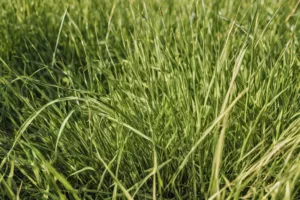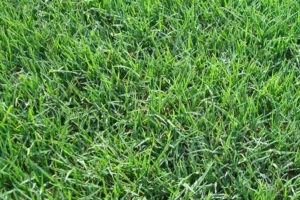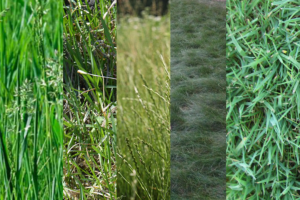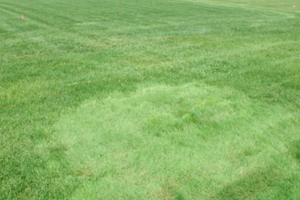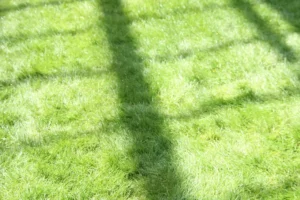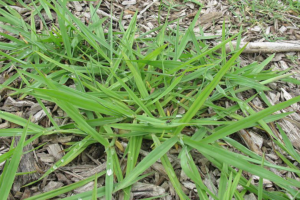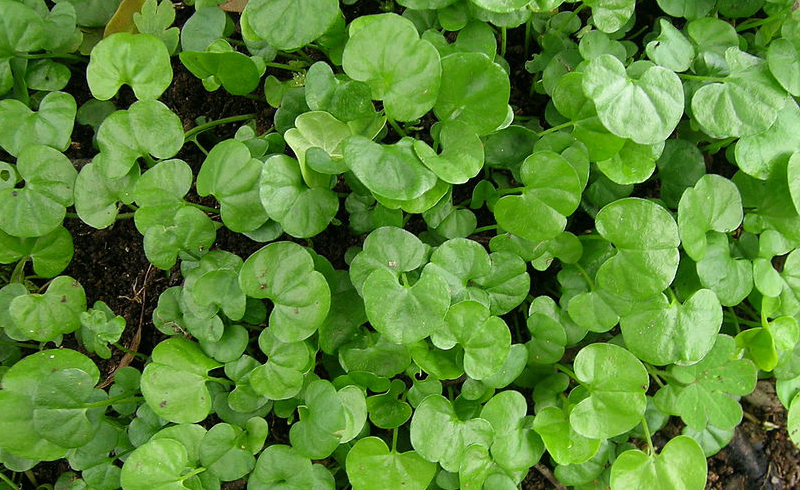
Brief Overview of Dichondra Grass
Despite its common name, Dichondra grass is not a grass but a small, creeping perennial plant. It’s known for its round, bright green leaves that give it a unique, carpet-like appearance. Due to its dense growth and low maintenance requirements, this plant is often used as a ground cover or lawn substitute.
Dichondra grass is native to many parts of the world, including the Americas, Asia, and New Zealand. It’s a versatile plant that can adapt to various environments, from full sun to partial shade, and it’s often used in landscaping for its aesthetic appeal and ability to fill in spaces where other plants may struggle to grow.
Importance and Uses of Dichondra Grass
One of the primary uses of Dichondra grass is as a ground cover. Its dense, mat-forming growth habit makes it an excellent choice for covering large areas of ground, helping to prevent soil erosion and suppress weed growth. It’s also a popular choice between paving stones, which can create a soft, green carpet effect.
In addition to its use as a ground cover, Dichondra grass is also commonly used as a lawn substitute. Compared to traditional lawn grasses, Dichondra grass doesn’t require regular mowing to maintain its appearance. This, combined with its tolerance for various soil conditions and its resistance to many common lawn pests and diseases, makes it an attractive, low-maintenance alternative to traditional lawns.
Scientific Classification and Characteristics
Dichondra grass belongs to the Convolvulaceae family, the same family as the morning glory and sweet potato plants. Dichondra is the genus, and there are several species within this genus. The plant is a perennial, meaning it lives for more than two years, and it’s known for its creeping growth habit.
The leaves of Dichondra grass are one of its most distinctive features. They are small, round, and bright green, giving the plant a lush, carpet-like appearance. The plant also produces small, inconspicuous flowers, usually white, green, or yellow. Dichondra grass is a low-growing plant, typically reaching only a few inches tall.
Different Species of Dichondra Grass
There are several species of Dichondra grass, each with its unique characteristics. Dichondra repens, also known as kidney weed or lawn leaf, is one of the most common species. It’s native to East Asia and is known for its ability to form a dense, mat-like ground cover.
Another common species is Dichondra micrantha, also known as Asian ponysfoot. This species is native to East Asia and is often used as a lawn substitute in warm climates. Dichondra carolinensis, or Carolina ponysfoot, is native to the southeastern United States and is often found in moist, shady areas.
Each species of Dichondra grass has its preferred growing conditions and care requirements, so choosing the suitable species for your specific needs and environment is essential.
Natural Habitat and Geographical Distribution
Dichondra grass is native to many parts of the world, including the Americas, East Asia, and New Zealand. It’s a versatile plant that can adapt to various environments, from full sun to partial shade.
In its natural habitat, Dichondra grass is often found in moist, well-drained soils. However, it can tolerate various soil conditions, including sandy, loamy, and clay. This adaptability, combined with its low maintenance requirements, has led to Dichondra grass being widely cultivated worldwide for its aesthetic appeal and practical uses as a ground cover and lawn substitute.
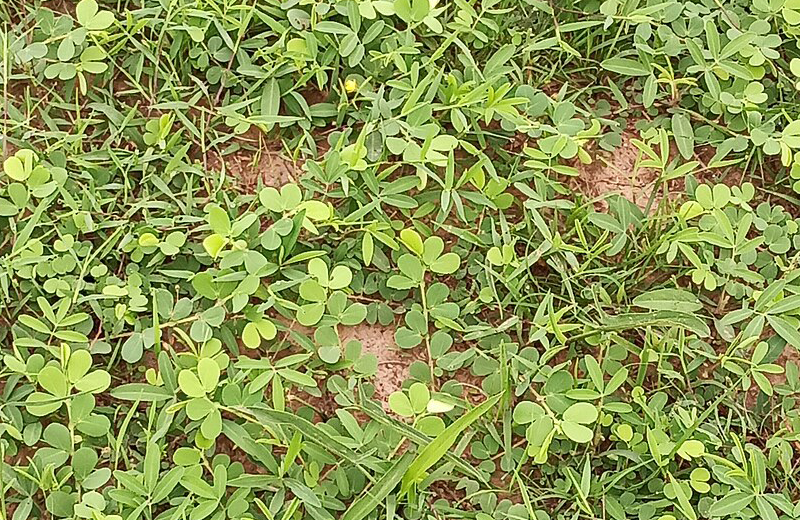
Ideal Conditions for Growth
Dichondra grass is a versatile plant that can adapt to various growing conditions. However, it does have some preferences that can help it thrive. Regarding light, Dichondra grass can grow in full sun to partial shade. However, in hotter climates, it appreciates some shade during the hottest part of the day to prevent the leaves from scorching.
When it comes to soil, Dichondra grass prefers well-drained soil. It can tolerate a range of soil types, from sandy to clay, as long as the soil doesn’t stay waterlogged. The soil pH can also vary, with Dichondra grass able to grow in slightly acidic to slightly alkaline conditions. However, a neutral pH is generally best.
Planting Process and Care
Planting Dichondra grass can be done through seeds or plugs, or sod. Starting from seed, it’s best to sow in the spring or early summer when temperatures are consistently warm. The seeds should be lightly covered with soil and kept moist until they germinate.
Once established, Dichondra grass requires minimal care. Regular watering is essential, especially during dry periods, but be careful not to overwater, as this can lead to root rot. Fertilizing can be done in the spring with a balanced fertilizer to promote healthy growth.
Common Challenges and Solutions
Like any plant, Dichondra grass can face some challenges. One common issue is pests, such as aphids and whiteflies. These can usually be controlled with insecticidal soap or other organic pest control methods. Diseases, such as leaf spot or root rot, can also occur, particularly if the plant is overwatered or the soil doesn’t drain well.
Another challenge can be invasive growth. Dichondra grass spreads through runners and can quickly take over a garden if not kept in check. Regular mowing or trimming can help control its spread. If Dichondra grass is used as a lawn substitute, occasional mowing will also help maintain a uniform height and promote denser growth.
Benefits of Dichondra Grass in Landscaping
Dichondra grass offers several benefits in landscaping due to its unique characteristics. Its dense, mat-forming growth habit makes it an excellent ground cover, helping to prevent soil erosion and suppress weed growth. Its bright green, round leaves add a lush, carpet-like texture to landscapes, making it an attractive choice for garden beds, borders, and areas between stepping stones.
In addition, Dichondra grass is a low-maintenance plant, requiring minimal care once established. It doesn’t require regular mowing like traditional lawn grasses and is resistant to many common lawn pests and diseases. This makes it an attractive option for homeowners looking for a low-maintenance, visually appealing addition to their landscape.
Design Ideas and Tips
Dichondra grass can be used in a variety of ways in landscape design. It’s an excellent choice for filling gaps between paving stones, creating a soft, green carpet effect. It can also edge garden beds or borders, providing a neat, tidy appearance.
For a more dramatic effect, Dichondra grass can be used to create a “green roof” effect. This involves planting Dichondra grass on top of structures such as pergolas or gazebos, where it can grow to form a lush, green canopy. This adds visual interest, provides shade, and helps reduce heat absorption.
Case Studies of Successful Landscaping Projects Using Dichondra Grass
There are many examples of successful landscaping projects using Dichondra grass. For instance, in a residential garden in California, Dichondra grass was used as a lawn substitute to create a lush, green carpet that requires minimal water and maintenance. The homeowners appreciated the soft texture and bright green color of the Dichondra grass and its low maintenance requirements.
In another project, a public park in Florida used Dichondra grass to fill in gaps between paving stones. The Dichondra grass added a soft, green touch to the hardscape, creating a more inviting and visually appealing space. The park’s maintenance staff appreciated the low maintenance requirements of the Dichondra grass and its resistance to foot traffic.
These case studies demonstrate the versatility and aesthetic appeal of Dichondra grass in landscaping projects. Whether used as a ground cover, a lawn substitute, or a filler between paving stones, Dichondra grass can add a unique touch to any landscape.
Comparing Dichondra Grass with Traditional Lawn Grasses
Dichondra grass is often used as a lawn substitute and for good reason. Compared to traditional lawn grasses, Dichondra grass offers several advantages. For one, it requires less maintenance. Traditional lawn grasses often require regular mowing, watering, and fertilizing to look their best. Dichondra grass, on the other hand, requires minimal care once established. It doesn’t need to be mowed regularly and is resistant to many common lawn pests and diseases.
In addition, Dichondra grass is more adaptable to different environments than many traditional lawn grasses. It can grow in various soil types and light conditions and is more drought-tolerant than many grass species. This makes it a good choice for homeowners looking for a low-maintenance, environmentally friendly lawn substitute.
Benefits and Challenges of Dichondra Lawns
Dichondra lawns offer several benefits. They provide a lush, green carpet that’s soft to walk on, making them an excellent choice for families with children or pets. Dichondra lawns are also more environmentally friendly than traditional lawns, as they require less water and are resistant to many common lawn pests and diseases.
However, Dichondra lawns also have their challenges. One of the main challenges is that Dichondra grass can become invasive if not properly managed. It spreads through runners and can quickly take over a garden if not kept in check. Regular mowing or trimming can help control its spread.
Another challenge is that Dichondra lawns may not stand up to heavy foot traffic as well as traditional lawns. If you have a high-traffic area, you may need to consider a more durable grass species or use stepping stones or a pathway to protect the Dichondra grass.
Maintenance Tips for Dichondra Lawns
Maintaining a Dichondra lawn is relatively straightforward. Regular watering is essential, especially during dry periods, but be careful not to overwater, as this can lead to root rot. Fertilizing can be done in the spring with a balanced fertilizer to promote healthy growth.
If your Dichondra lawn is getting too thick or spreading into areas where it’s not wanted, regular mowing or trimming can help keep it in check. However, remember that Dichondra grass doesn’t need to be mowed as frequently as traditional lawn grasses.
Finally, keep an eye out for pests and diseases. While Dichondra grass is resistant to many common lawn pests and diseases, it’s still a good idea to monitor your lawn regularly and address any issues as soon as they arise.

Role of Dichondra Grass in Preventing Soil Erosion
Dichondra grass plays a significant role in preventing soil erosion. Its dense, mat-forming growth habit helps to hold the soil in place, preventing it from being washed away by rain or wind. This is particularly beneficial in areas prone to erosion, such as slopes or areas with loose, sandy soil.
In addition to preventing soil erosion, Dichondra grass also helps to improve soil health. Its roots help to break up compacted soil, improving soil structure and allowing water and nutrients to penetrate more deeply. This can lead to healthier, more fertile soil over time.
Successful Erosion Control Projects Using Dichondra Grass
There are many examples of successful erosion control projects using Dichondra grass. For instance, Dichondra grass was planted in a coastal area prone to erosion to help stabilize the soil. The Dichondra grass quickly established a dense mat, effectively holding the soil in place and preventing further erosion.
Dichondra grass was used in another project to stabilize a slope along a highway. The slope had been prone to erosion, leading to soil and debris falling onto the highway. After planting Dichondra grass, the erosion problem was significantly reduced.
These projects demonstrate the effectiveness of Dichondra grass in preventing soil erosion. Its dense, mat-forming growth habit and ability to grow in various soil types and conditions make it an excellent choice for erosion control.
Tips for Using Dichondra Grass in Erosion Control
If you’re considering using Dichondra grass for erosion control, there are a few tips to remember. First, it’s essential to prepare the soil properly. This may involve adding organic matter to improve soil structure and fertility or grading the area to ensure proper drainage.
Once the Dichondra grass is planted, regular watering is essential to help it establish. However, be careful not to overwater, as this can lead to root rot. Once the Dichondra grass is established, it requires minimal care and should be able to prevent soil erosion effectively.
Finally, while Dichondra grass is an effective erosion control plant, it’s not a cure-all. Additional measures may be needed in areas with severe erosion problems, such as installing erosion control blankets or constructing retaining walls.
Common Pests and Diseases
While Dichondra grass is generally a hardy and resilient plant, it can still be affected by certain pests and diseases. Common pests that may affect Dichondra grass include aphids, whiteflies, and certain types of beetles. These pests can cause damage to the leaves and stems of the plant and, in severe cases, can stunt growth or even kill the plant.
Diseases can also pose a threat to Dichondra grass. Fungal diseases, such as leaf spot or root rot, can occur, particularly if the plant is overwatered or if the soil doesn’t drain well. These diseases can cause discoloration, wilting, and in severe cases, plant death.
Prevention and Treatment Methods
Preventing pests and diseases is often easier than treating them once they take hold. Regular monitoring of your Dichondra grass can help you spot the early signs of pests or disease, allowing you to take action before the problem becomes severe. Good cultural practices, such as proper watering and fertilization, can also help keep your Dichondra grass healthy and resistant to pests and diseases.
If pests or diseases do occur, there are several treatment options available. Organic solutions such as insecticidal soaps or neem oil can be effective for pests. For diseases, fungicides can be used, although it’s often more effective to address the underlying cause of the disease (such as poor drainage) to prevent future outbreaks.
Impact of Pests and Diseases on Dichondra Grass Quality
Pests and diseases can significantly impact the quality of your Dichondra grass. Damage from pests can cause the leaves to become discolored or distorted and, in severe cases, can cause the plant to die back. Diseases can also cause discoloration, as well as wilting or death of the plant.
In addition to affecting the appearance of your Dichondra grass, pests and diseases can also affect its health and vigor. A plant constantly battling pests or diseases will be less vigorous and more susceptible to other stresses, such as drought or extreme temperatures.
Therefore, monitoring your Dichondra grass regularly for signs of pests or diseases and taking action at the first sign of trouble is essential. Dichondra grass can be a beautiful and resilient addition to your landscape with proper care and attention.
Dichondra Grass and Water Conservation
Dichondra grass is known for its drought tolerance, making it a good choice for water conservation in landscaping. Unlike traditional lawn grasses, which often require frequent watering to maintain their appearance, Dichondra grass can survive with less water. This makes it a more sustainable choice, particularly in areas where water is scarce, or water restrictions are in place.
In addition to its drought tolerance, Dichondra grass also has a dense, mat-forming growth habit. This helps to shade the soil, reducing evaporation and helping to conserve water. It also helps improve soil structure, increasing the soil’s water-holding capacity and further contributing to water conservation.
Impact on Local Biodiversity
Dichondra grass can also have an impact on local biodiversity. Its dense growth provides a habitat for various small creatures, from insects to mammals. It can also provide food for certain types of wildlife, such as birds or butterflies.
However, it’s important to note that Dichondra grass can become invasive in some areas. This means it can spread rapidly and outcompete native plants, hurting local biodiversity. Therefore, managing Dichondra grass carefully is essential to prevent it from becoming invasive.
Case Studies on Dichondra’s Environmental Impacts
While I couldn’t find specific case studies on Dichondra grass, there are many examples of similar ground covers being used to positive effect in environmental projects. For example, ground covers like Dichondra grass have been used in urban areas to reduce heat island effects, improve air quality, and provide habitat for wildlife. They’ve also been used in rural areas to prevent soil erosion and improve water quality.
These examples demonstrate the potential environmental benefits of ground covers like Dichondra grass. However, more research is needed to fully understand the specific impacts of Dichondra grass on the environment.
Potential Uses and Developments
Dichondra grass has a lot of potential for future uses and developments. Its low maintenance requirements, aesthetic appeal, and environmental benefits make it a promising choice for various applications.
Dichondra grass could be used more widely in landscaping as a lawn substitute or ground cover. Its ability to grow in various conditions, from full sun to partial shade, and in various soil types makes it a versatile choice for many different landscapes. Its dense, mat-forming growth habit also makes it an effective solution for preventing soil erosion, particularly on slopes or in areas with loose soil.
Dichondra grass could be used as a cover crop to improve soil health and suppress weeds in agriculture. Its dense growth can help to improve soil structure and increase organic matter content, while its ability to suppress weeds can reduce the need for chemical weed control.
Environmental Impact and Sustainability
The environmental impact and sustainability of Dichondra grass are also areas of potential future interest. Dichondra grass could play a role in water conservation efforts as a drought-tolerant plant, particularly in areas where water is scarce, or water restrictions are in place.
Its potential impact on local biodiversity is another area of interest. While Dichondra grass can provide a habitat for a variety of small creatures, it can also become invasive in some areas, potentially threatening local biodiversity. More research is needed to understand this impact and to develop strategies for managing Dichondra grass in a way that benefits biodiversity.
Challenges and Opportunities
Like any plant, Dichondra grass faces particular challenges. Its potential to become invasive is one major challenge, and more research is needed to understand how to manage this risk. Pests and diseases can also pose challenges, particularly in areas where Dichondra grass is not native.
However, these challenges also present opportunities. For example, research into the invasive potential of Dichondra grass could lead to new strategies for managing invasive plants more generally. Similarly, research into the pests and diseases that affect Dichondra grass could lead to new insights into plant health and disease management.
Overall, while Dichondra grass already has many uses, there is a lot of potential for future developments. With further research and innovation, Dichondra grass could become an even more valuable plant in landscaping, agriculture, and environmental conservation.
Dichondra Grass in Commercial Landscaping
Commercial landscaping can benefit significantly from the use of Dichondra grass. Its low maintenance requirements make it a cost-effective choice for businesses and public spaces. It doesn’t require regular mowing like traditional lawn grasses, which can save time and resources. Its resistance to many common lawn pests and diseases reduces the need for chemical treatments.
In addition, Dichondra grass has a unique aesthetic appeal that can enhance the look of commercial landscapes. Its bright green, round leaves create a lush, carpet-like effect that can add a touch of elegance to any space. It’s also a versatile plant that can be used in various ways, from ground cover to filler between paving stones, making it an excellent choice for various commercial landscaping projects.
Case Studies of Dichondra Grass in Commercial Landscaping
There are many examples of Dichondra grass being used successfully in commercial landscaping. For instance, in a shopping center in California, Dichondra grass was used as a ground cover to create a lush, green space that required minimal maintenance. The shopping center’s management reported that the Dichondra grass was easy to care for and added a beautiful touch to the landscape.
In another example, a public park in Florida used Dichondra grass to fill in gaps between paving stones. The Dichondra grass added a soft, green touch to the hardscape, creating a more inviting and visually appealing space. The park’s maintenance staff appreciated the low maintenance requirements of the Dichondra grass and its resistance to foot traffic.
These case studies demonstrate the potential of Dichondra grass in commercial landscaping. With its low maintenance requirements, aesthetic appeal, and versatility, Dichondra grass can be valuable to various commercial landscapes.
Future Trends in Commercial Landscaping with Dichondra Grass
Looking to the future, Dichondra grass is likely to become an even more popular choice in commercial landscaping. As businesses and public spaces look for ways to reduce their environmental impact, low-maintenance and drought-tolerant plants like Dichondra grass will likely be in high demand.
In addition, as more research is conducted into the benefits of Dichondra grass, we may see new uses and applications being developed. For instance, Dichondra grass could be used in green roof projects, which could help reduce heat absorption and improve air quality. Or it could be used in urban farming projects, where its dense growth could help to suppress weeds and improve soil health.
Overall, the future looks bright for Dichondra grass in commercial landscaping. With its many benefits and potential applications, it’s a plant that’s well worth considering for any commercial landscaping project.
References and Further Reading
Many resources are available for those interested in learning more about Dichondra grass. Here are a few recommended readings and resources to get you started:
- The University of California’s Integrated Pest Management Program provides a detailed guide on Dichondra grass, including its growth habits, uses, and potential pests and diseases.
- The Florida-Friendly Landscaping Guide from the University of Florida’s Institute of Food and Agricultural Sciences includes information on Dichondra grass and other ground covers suitable for Florida’s unique climate and conditions.
- The Water Use Classification of Landscape Species (WUCOLS) project from the University of California provides information on the water needs of Dichondra grass and other landscape plants in California.
- For a more scientific perspective, the Journal of Plant Registrations often includes articles on new plant varieties, including Dichondra grass.
- Finally, for practical advice on growing and maintaining Dichondra grass, websites like Gardening Know How and The Spruce offers plenty of tips and tricks.
These resources provide information on Dichondra grass, from its essential characteristics to its potential uses and benefits. Whether you’re a homeowner looking to revamp your lawn, a landscaper seeking new plants to incorporate into your designs, or a plant enthusiast interested in learning more, these resources are a great place to start.

Bob Green, a passionate lawn care enthusiast with over two decades of landscaping experience, is this website’s proud owner. His vast knowledge of horticulture and dedication to helping homeowners maintain beautiful lawns are reflected in the valuable content he shares on his platform. John has always been interested in Agrostology.









